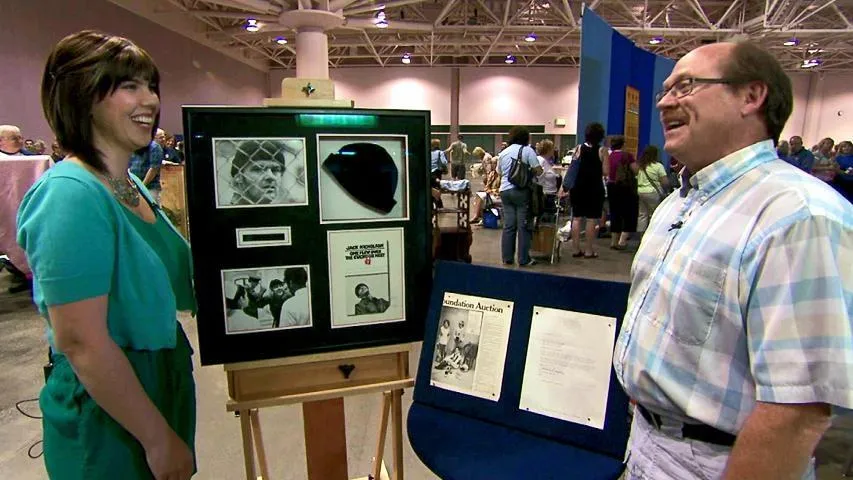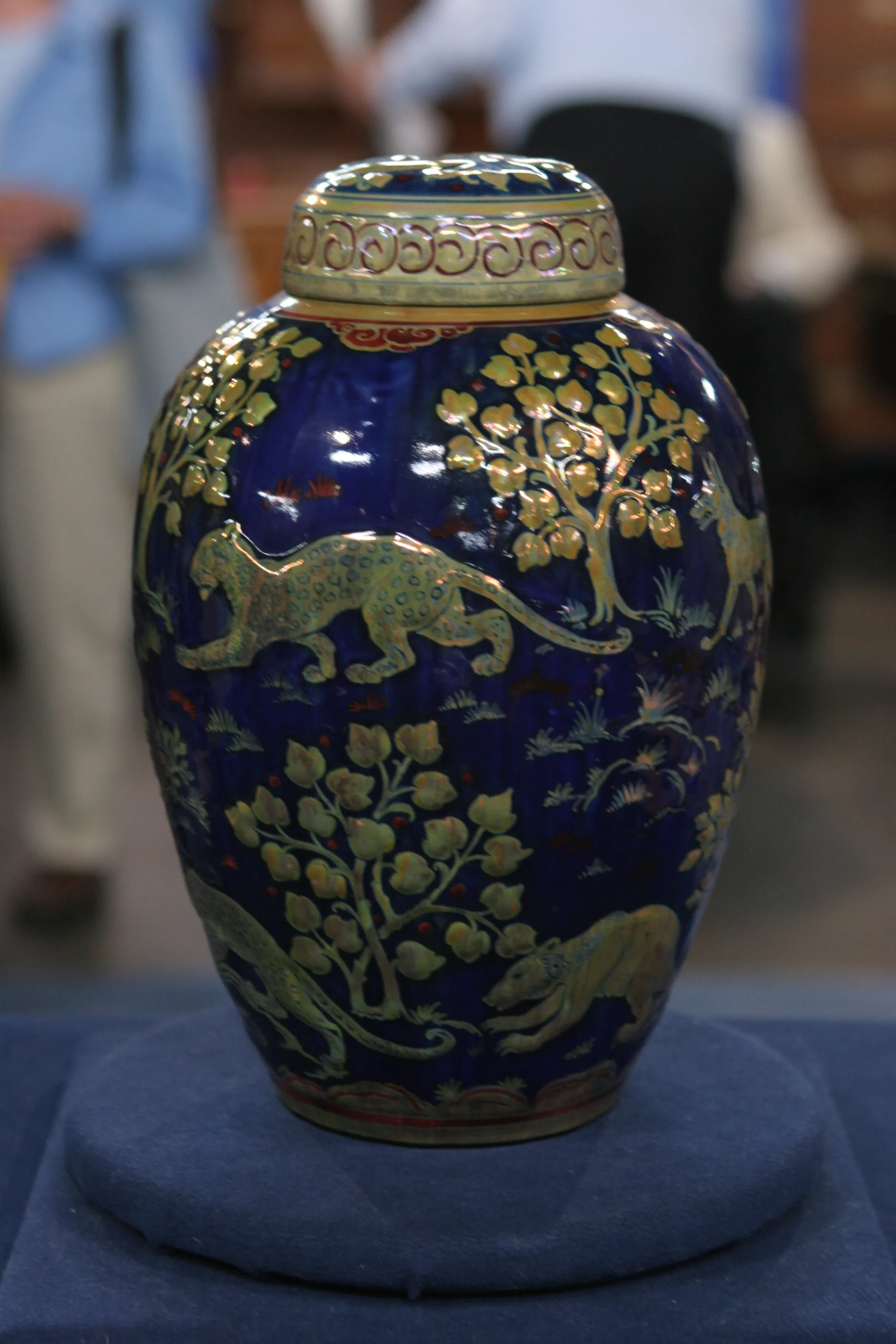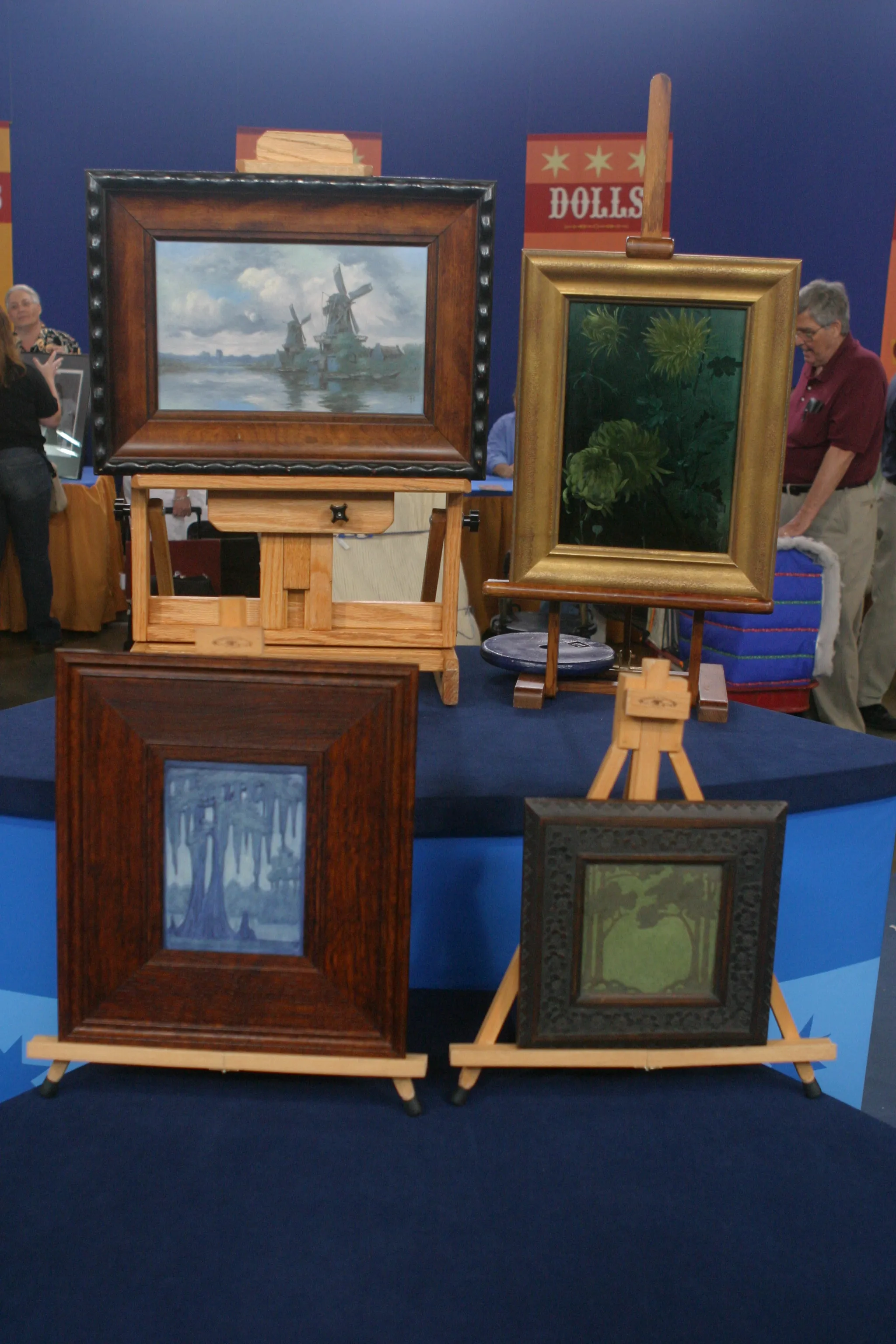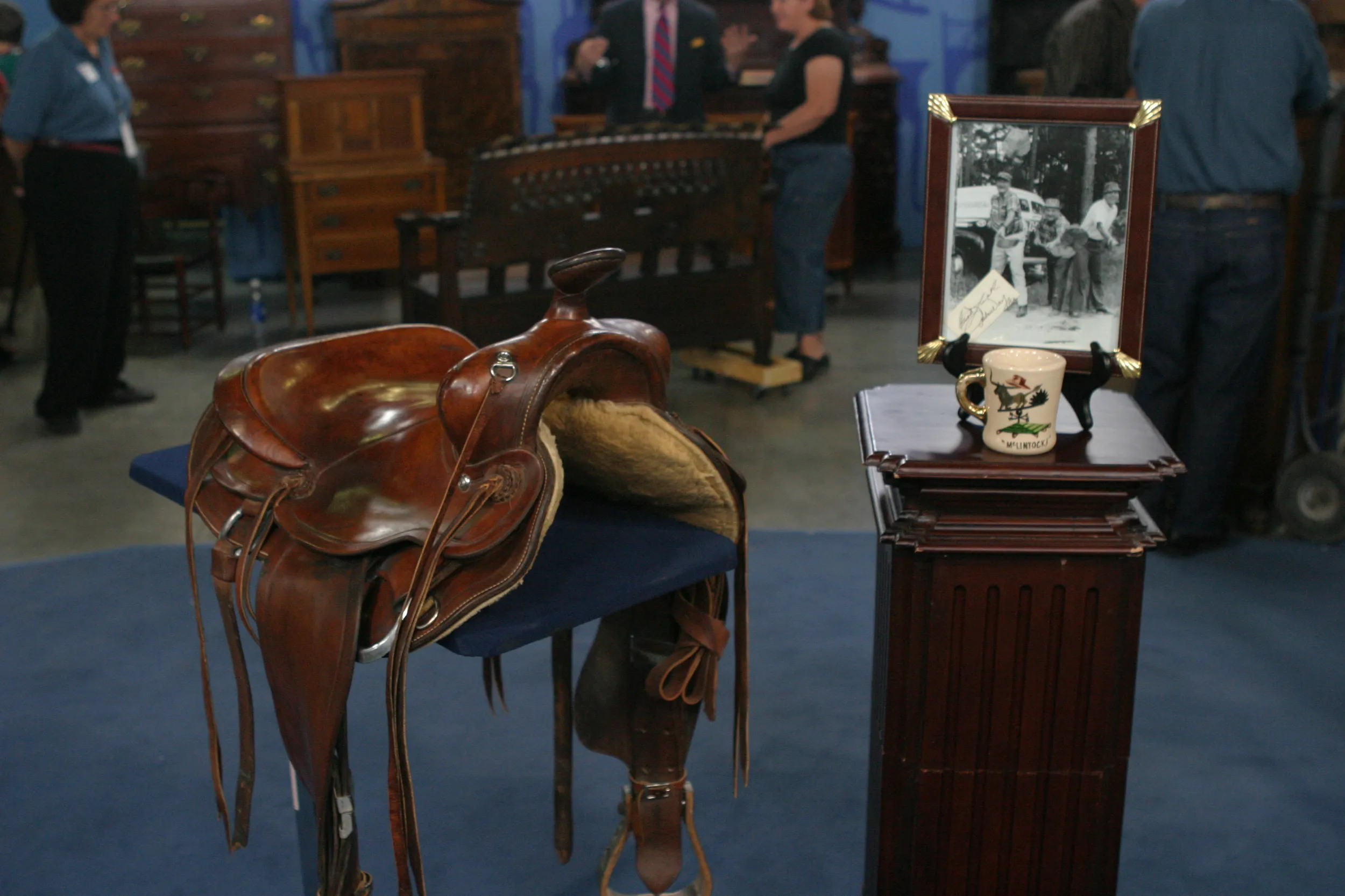GUEST: They were both purchased at estate sales, two different ones: one by my mother, which is this one, and the other one by myself, approximately 30 years ago.
APPRAISER: So you've had both pieces for 30 years?
GUEST: At least, yes.
APPRAISER: Wow. Talk to me about the piece, the butterscotch piece, the Grueby jar.
GUEST: It is Grueby. I guess my interest is the color, and you called it butterscotch, and the fact that it has a cover-- I've never seen a piece with a cover. And the other piece...I collect butterflies, and I'm hoping that Mother will give it to me someday.
APPRAISER: So she's not giving it to you yet,
GUEST: No, no, no.
APPRAISER: but you're working on it. In their way, these two pieces tell the story of American art pottery. So we start with the Grueby piece made in Boston, Massachusetts. This piece dates to about, I'd say, 1900 or so. It's a fairly early piece, sort of at the beginning of Arts and Crafts in America. And we have the Rhead piece from the other coast, done by Frederick Rhead in Santa Barbara, California, sometime between 1914 and 1916. So the two pieces, in terms of the scope, cover the entire United States, the dates cover the entire Arts and Crafts period. They say different things in very same ways about what Arts and Crafts is in America. For example, they both have matte glaze decoration. They're not naturalistic; they're stylized-- these butterflies are stylized. And they both represent the pinnacle of Arts and Crafts ceramic decorative art at the turn of the century to the end of the Arts and Crafts period. What you mentioned about the Grueby pot, the lid is unusual. Obviously, the lids are removable, they're fragile, it's ceramic, they break, they're lost. I've seen perhaps... in almost 40 years, I've seen maybe four or five pieces of Grueby that were meant to have lids that still had their lids intact.
GUEST: Okay.
APPRAISER: And this one has no damage. This is in absolutely perfect condition. So it's the original matching lid in perfect condition. The glaze works together with the base. The piece is well marked, by the way, as most Grueby is, and it does have a lot of impact on pricing. Normally, this piece of Grueby, which you would see like this without the lid, I would estimate, at auction, for about $1,000 to $1,500. With the lid intact, my auction estimate would be $3,000 to $4,000.
GUEST: Wow.
APPRAISER: So it triples the value of the piece, it's significant. The Rhead piece... Frederick Rhead was all over the place. He started in England, he worked for Roseville, he worked for Weller, he ended up inventing Fiesta ware for Homer Laughlin after he left Santa Barbara, but this was the last small studio he worked at where he did his best art pottery work. It too is very clearly marked. Believe it or not, a piece of Frederick Rhead like this, on today's market at auction, if I had this as an estimate, about $10,000 to $15,000.
GUEST: Oh, my God.
APPRAISER: I hope your mom's happy, too.
GUEST: Oh, she will be.











